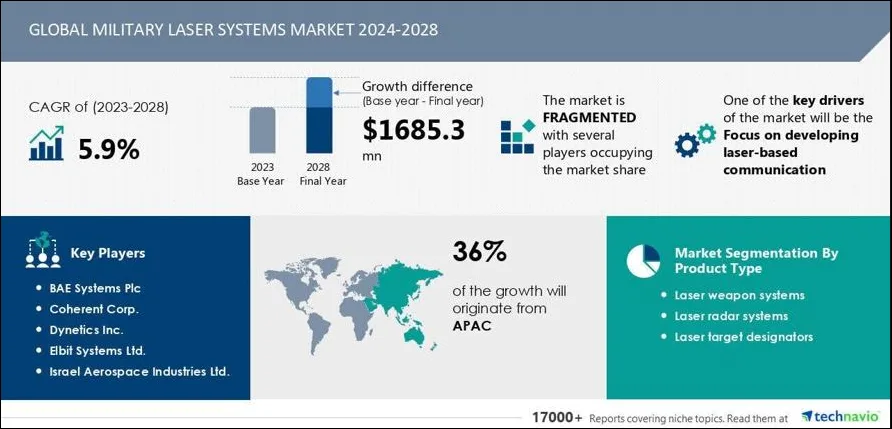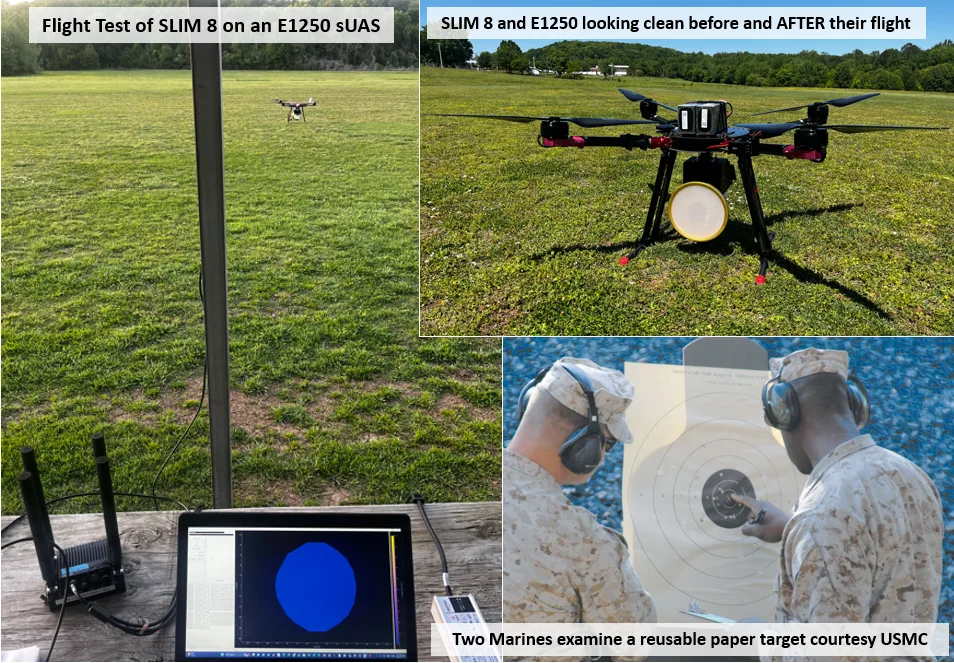Dare to Test Laser Weapons Systems Differently
SemQuest – How Reusable High Energy Laser Targets Can Help Laser Weapons Systems Perform even Better
By Caleb Hoover
Investments in Laser Weapons Systems is expected to Grow
CNHINEWS and Yahoo!finance with articles covering a TechNavio report covering how the military laser systems market size is forecasted to increase by USD 1.69 billion.

CNHINEWS sums up a key challenge TechNavio includes in their report:
However, project terminations due to failure of prototypes poses a challenge – Key market players include BAE Systems Plc, Coherent Corp., Dynetics Inc., Elbit Systems Ltd., Israel Aerospace Industries Ltd., Lockheed Martin Corp., MBDA, MKS Instruments Inc., Newport Corp., Northrop Grumman Corp., Rafael Advanced Defense Systems Ltd., Rheinmetall AG, RTX Corp., Saab AB, Safran SA, Thales Group, and The Boeing Co.
The competition is fierce for companies developing High Energy Laser systems. It will be critical for companies to differentiate themselves not only amongst other Laser Weapon Systems (LWS) manufacturers, but also by comparing their system to existing defense methods and systems.
So how do these Laser Weapon System prototypes fail?
Perhaps this list covers some likely reasons:
•System cost – Even if the cost of making a single laser shot is low at ~$3-10 a shot, the upfront system cost might still be deemed too much. It isn’t just the cost of the “bullet” but also the cost of the “gun” that should go into the procurement decision process.
•System range – If an LWS’s range is considered too short when compared to other defensive means available (i.e. guns, missiles, intercept drones, etc.) that too could lead to a failure assessment against the LWS.
•System endurance & reliability – For perspective, a New York Times article published in 2009, discusses an issue with M-16s and M-4 service rifles jamming in combat. This prompted test firing over 8 million rounds to assess rifle reliability. It was found during the test, that the average interval between stoppages exceeded 3,600 rounds. Are LWS being held to THAT high of an endurance and reliability test standard?
•System maintenance – Maintaining these new LWS platforms is complicated due to all the physics and science that goes into the process of making an effective combat weapon out of laser technology. Some of the existing laser diagnostics equipment for such high laser power levels can be quite heavy and difficult to deploy with. Maintenance tools should be enablers and NOT a drain on logistics.
•System operation – It seems that operating laser systems easily is based upon efforts to make their controls similar to video game controllers as mentioned in this BizzBuzz article
So outlined in a different SemQuest Blog post, an extremely common method of testing lasers today consists of “kill testing” on drones. This testing will involve the laser shooting the drone out of the sky in an exciting show of force.
Just watch any of these videos to see what we’re talking about:
Navy Laser Test
UK Dragon Fire Laser
BlueHalo Locust Laser
Pretty cool right?
It’s ok to say “yes” we think these videos are really cool too.
Yet, what happens once you setup for this dramatic kill shot and finally take the drone out? Sure you could have a swarm of multiple drones out there but that would be A LOT of drones to shoot through at a mounting cost if the goal is to evaluate system endurance and reliability to the same degree of rigor mentioned with M-16s and M-4s above.
Drone kill testing is similar to one rep max training in the weight room. How well can we perform if all we’re doing is one rep max sets? Well, we won’t perform as well as we could if we had a hybrid training plan with sets of multiple reps that serves to train us up for a higher one rep max.
Consider basketball. No well-rounded team will have a strategy that consists of ONLY dunks and layups at close range from the basket. You need to make a couple 3-pointers too!
Jeff Haefner states in “How to Develop Long Distance Basketball Shooting Range”:
The trick is to extend your range while maintaining the EXACT SAME FORM.
There are only TWO ways to increase your range:
1. INCREASE YOUR PHYSICAL STRENGTH AND POWER. (This is like getting a more powerful laser 20 kW upgraded to 50 kW
2. ADJUST YOUR SHOT MECHANICS FOR ADDITIONAL POWER. (This is like improving beam quality for better irradiance)
With that said, we’ll teach you exactly how to increase your range both ways. It’s up to you to decide which method you choose.
Who would’ve thought that basketball and lasers could have so much in common? With laser system development, determining the shot mechanics to make smaller beam sizes at longer ranges is a real challenge when doing kill testing. Think of how the process could be made cheaper AND more effective over the long run with reusable targets.
The only drawback to this different style of testing is that the cool wreckage of a shot down drone won’t be there to find out in the desert. Instead, you’ll just have a nice-looking still flyable drone (and target) returning to your launch pad to get some fresh batteries prior to launching back out to do it all again. That, and plenty of data to tell you how your laser shot.

References
Bhattacharie, D. (2024, October 5). US military adopts video game controllers for advanced weapons systems. Retrieved from Bizz Buzz: https://www.bizzbuzz.news/international/us-military-adopts-video-game-controllers-for-advanced-weapons-systems-1338506
Chivers, C. (2009, November 3). The M-16 Argument Heats Up, Again. Retrieved from Archive The New York Times: https://archive.nytimes.com/atwar.blogs.nytimes.com/2009/11/03/the-m-16-argument-heats-up-again/
TechNavio. (2024, September). Military Laser Systems Market Analysis North America, APAC, Europe, Middle East and Africa, South America – US, China, Russia, UK, Saudi Arabia – Size and Forecast 2024-2028. Retrieved from TechNavio: https://www.technavio.com/report/military-laser-systems-market-industry-analysis
TechNavio. (2024, October 17). Military Laser Systems Market to Grow by USD 1.69 Billion from 2024-2028, Driven by Advancements in Laser-Based Communication, AI-Powered Market Evolution – Technavio. Retrieved from CNHINEWS: https://www.cnhinews.com/news/article_09f40945-2eae-52d7-a855-089d3db6c2c2.html
Yahoo!finance. (2024, October 17th). Military Laser Systems Market to Grow by USD 1.69 Billion from 2024-2028, Driven by Advancements in Laser-Based Communication, AI-Powered Market Evolution – Technavio. Retrieved from Yahoo!finance: https://finance.yahoo.com/news/military-laser-systems-market-grow-214000763.html?guccounter=1&guce_referrer=aHR0cHM6Ly93d3cuZ29vZ2xlLmNvbS8&guce_referrer_sig=AQAAAHQ6ZEx27duiaHaAJi0c3BgHB9yZySzLqnGDVyl-BVL0Rtu_U5YuIhcT3O9M6GrLKW4AAsuk1MkSUdAe-7cPEyBOI9leY
